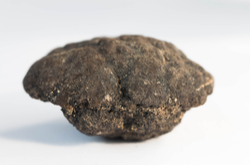Mapping the big blue: Laser-induced technology to help mineral exploration at oceanic depths
Marine mineral resources have been attracting a lot of attention lately, thanks to the rising demand for raw materials that are used in smart electronics, medical sciences and renewable energy products. With depleting land-based deposits for metals such as copper, nickel, manganese, zinc, lithium and cobalt, seabed mining is seen as an opportunity to increase existing reserves. However, it could be a costly process that also has implications for the environment, particularly in how it affects biodiversity and ecosystems. Mapping and quantifying minerals on the ocean floor could help exploration efforts. This is exactly what a team of researchers has set out to do under the EU-funded ROBUST project. As stated in a press release, scientists at project partner Laser Zentrum Hannover e.V. (LZH) have measured zinc samples at a pressure of 600 bar by using laser-induced breakdown spectroscopy (LIBS). “They were able to show that the LIBS system developed at the LZH is suitable for use in the deep sea at water depths of up to 6 000 meters.” The LZH has been working with eight other European partners to develop a laser-based, autonomous measuring system for underwater use. “The system is supposed to detect samples, such as manganese nodules, and analyze their material composition directly on the deep sea ground.” The same press release notes that LIBS is a “non-contact and virtually non-destructive method of analyzing chemical elements.” It can examine solid materials, liquids and gases, and is based on the generation and analysis of laser-induced plasma. “Here, a high-energy laser beam is focused on the sample. The energy of the laser beam in the focal point is so high that plasma is created. The plasma in turn emits an element-specific radiation, which is measured with a spectroscope.” Oceanic conditions The project team designed and manufactured a special pressure chamber to test the LIBS system under deep-sea conditions. It can simulate a water depth of 6 500 meters with a pressure of up to 650 bar. “The chamber is suitable for both freshwater and saltwater and can thus simulate various application scenarios. Through a viewing window, the laser radiation enters the pressure chamber with the test sample to be analyzed,” the press release adds. The ongoing ROBUST (Robotic subsea exploration technologies) project addresses the need to “develop an autonomous, reliable, cost effective technology to map vast terrains, in terms of mineral and raw material contents,” according to CORDIS. The team believes the technology will help reduce the cost of mineral exploration in an efficient and non-intrusive manner, with minimum impact to the environment. The project website explains: “The AUV [autonomous underwater vehicle] Robotic vehicle will dive, identify the resources that are targeted for LIBS scanning through 3D real time mapping of the terrain (hydro-acoustically, laser scanners, photogrammetry) and position the LIBS in the required locations of mineral deposits on the ocean floor to autonomously perform qualitative and quantitative analyses.” For more information, please see: ROBUST project website
Countries
United Kingdom



